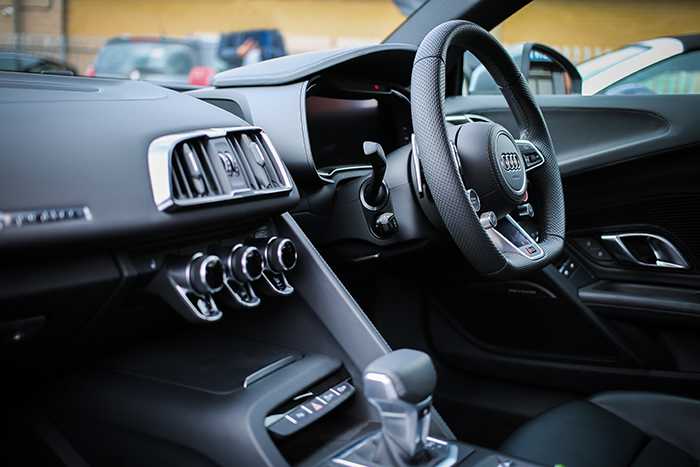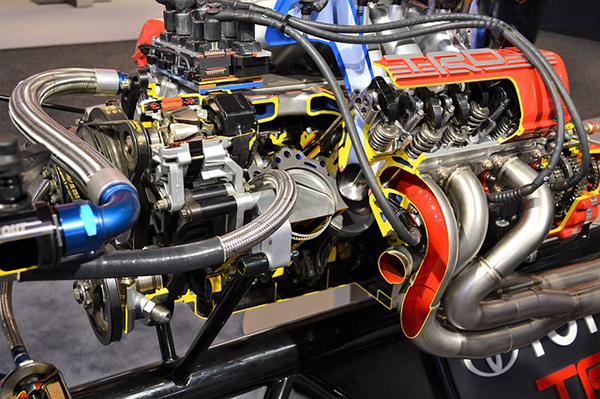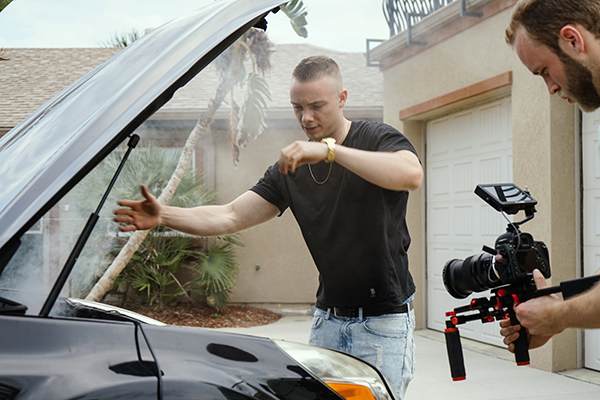Important Car Dashboard Symbols And Their Meanings

image source: pexels
Your vehicle's dash provides you with a host of information. While you have the main information including engine temperature, fuel, miles per hour, and so on, your dash will also provide you with information telling you when the vehicle is not performing correctly. Modern vehicles take this a step further as it is now possible to diagnose many of your car's problems through the dash and offered error codes. However, the best way to stay on top of what's going on with your vehicle and to not be completely terrified of a light popping on the dash is to know what each of the lights mean. Here is what you need to know regarding your car dashboard symbols.
What Is Displayed On Car Dashboard Symbols?
Your car can showcase a wide range of information right on the dashboard. Most car dashboard symbols will be the same, although the overall appearance of the symbol might be different from one vehicle type to the next. Due to this, it is best to always have the owner's manual on hand within your vehicle. This way, should a light come on, you are able to look up the information and have a better understanding as to what the light means and what kind of problem might be going on with your vehicle.
Computer Codes
When a light pops up on your dash it means there is something you need to address. However, a check engine light can mean anything from needing an oil change to a cracked gasket. One problem is a simple $30 fix while another may mean you need an entirely new engine. That's a pretty big difference. Thankfully, there are ways you can check your vehicle's computer error codes.
If you have a vehicle made within the last 10 years, you can probably check the code without any special equipment. Most vehicles have a connection port that allows a mechanic to plug into the vehicle and download the error code information. However, there's a good chance you can do this on your own. This way, you may be able to troubleshoot and correct the problem without going to the mechanic.
Look up how to check the computer code on your vehicle. If you have a newer car that uses a key there often is a series of turns (such as turn to on, then off, then back to on three times before turning the key all the way to fire up the ignition) and after you accurately perform the series, the car dash will run through the error codes. You'll want to write the error codes down and then check these codes on your computer or phone. This way, you know exactly what the error code is for.
Knowing how to check the codes on your vehicle is a major money saver. It's far less expensive to figure out you need a new gas cap than taking the car into a repair shop and paying for them to tell you this.
Common Warning Lights And Their Meanings
There are all kinds of car dashboard symbols. Some of these symbols are pretty easy to figure out; others you may have no clue what the symbols mean. However, always keep your owner's manual so you can double check as some icons may look foreign to you.
Color Of The Lights
Before getting into the most common car dashboard symbols it is important to point out the lights. Some systems have individual lights (such as red or blue). However, there are other symbols that will have different light settings. For example, if you see an image for an engine in yellow, it means the problem is less serious but you should have the car serviced soon. If the light is red it means there is an immediate issue and you need to stop driving right away (such as if the vehicle is about to overheat and blow the engine). So don't just check what the symbol is. You also want to check what the color is.
Battery Light

image source: pixabay
This icon looks like a car battery with a "+" and "-" on the top. If this icon is appearing it means your battery is not holding a charge. Now, the problem may not be with the battery itself as there are a number of other components to the electrical system. Chances are, though, that when you see this icon, your vehicle is not turning on.
Steering Lock
This icon will have an image of a steering wheel. It may also have a key next to it. This is on newer vehicles and it is a safety feature. It means the steering wheel is locked and cannot be turned. This often happens with the steering wheel and tires are turned when the vehicle is off (you may have pretended to drive as a child, only to have the wheel lock up on you). If you're getting into your vehicle and this light is on, it means someone may have tried to manipulate a wheel on your vehicle.
Tire Pressure Monitor
This is a more common icon you'll see, especially in new cars. It has a half-circle and an exclamation point in the middle. If you have a yellow light, it means the air pressure is slightly off. If it's red it means you likely have a leak. If your vehicle shows the actual PSI, switch to this display. Often times shifts in temperature will have an impact on this. However, if one tire is more than a few PSI off, you may have a leak. Pull over and monitor the issue.
Engine Oil
This looks like a dripping oil can (typically). When this icon appears it means you have low oil levels. You need to take your vehicle in and have the oil changed soon.

image source: pixabay
Check Engine Light
Nothing will make you go numb faster than seeing the check engine light pop on. However, this light also has the most potential meaning behind it. This light is set off due to the emissions control running from the engine. It can be anything from a bad oxygen sensor to the cap of your gas tank not being screwed on tightly (or maybe you forgot to put it back on after filling up). Above all other lights, this is the one that's most helpful to know how to check your car's error codes.
ABS
This light will feature the letters "ABS" which means "Anti-lock Brake System." If the light pops on it means there is a problem with the anti-lock brake feature on your vehicle. While it's still driveable (if you're older than 30 your starter car likely didn't have ABS), your brakes will lock up when braking hard. So have this serviced sooner rather than later.
What To Do If You Have Car Trouble

image source: pexels
Seeing one of the car dashboard symbols light up does not mean you are in immediate trouble. Again, if you can check the computer's error code, this is best. You'll have a better idea as to what is going on and whether you can drive further. However, if the error code is serious, or if you have a red engine light popping on or one of the dead battery car dashboard symbols, you'll need to know what to do.
Pull Over Somewhere Safe
If you're driving and the car dashboard symbols pop on with a critical error, find somewhere safe to pull off to. Gas stations and service centers are helpful, but if you can't pull into one of these locations, do whatever you can to get off the road. If there is a red light on it means you may have extreme problems occurring soon. You don't want to be on the road when that problem happens.
Contact Roadside Assistance
If you have AAA or roadside assistance through your insurance provider, you'll want to give them a call. Tell them the situation and where you're at. They will send a mechanic or technician out to help you. If it is a battery problem, they can test the battery and give you a new one. In other instances, they can tow you to a necessary service center. They may also be able to give you a ride to the service center, or you can have a friend or ride share service take you.
Find The Problem
Now, find out the problem with the vehicle and what needs to be done. Sometimes the car dashboard symbols are not serious, and yet other times it is a very serious problem. The service center will tell you what's going on and what is recommended.
Conclusion
You never want to see car dashboard symbols popping onto your dash. Some of these symbols are not serious and can be addressed without much of a problem. However, if the car dashboard symbols are serious, you need to get off the road, contact your roadside assistance provider, and have the vehicle taken to a service center. It's always better to remain safe and to avoid attempting to drive the vehicle in the event of a potentially serious problem.


